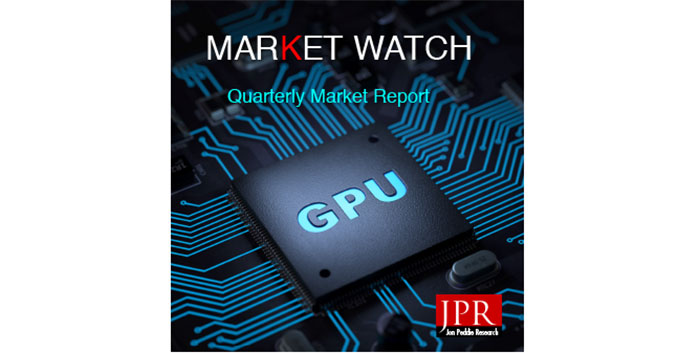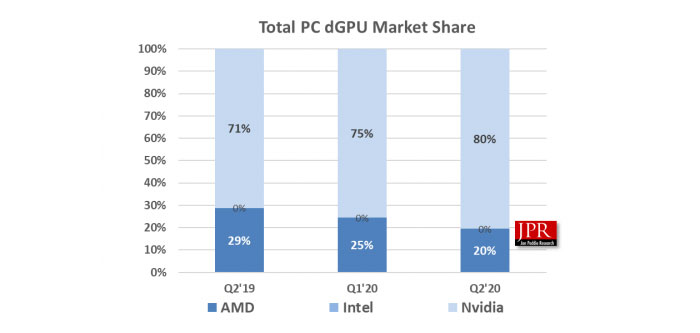Nvidia's GeForce special event is scheduled for next Tuesday and PC gamers and enthusiasts are on the whole quite excited at the prospect of finding out further official details about these next gen graphics cards. We will be watching closely for mentions of new features, any performance metrics / comparisons that are shared, and hopefully we will be given some pricing/hard launch indications on the day.

With the above dominating the GPU news / leaks at the current time, it is interesting to see the competitive landscape which the new GPUs will plough. Market researchers at JPR have just updated their Market Watch report on the PC graphics market for Q2 2020, to help sketch out the state of play.
We will ponder most over the discrete GPU market share as this is the one that is relevant to the AIB/AIC GPU makers, and the HEXUS readership, though JPR shares quite a bit of information on integrated graphics too.

Above you can see that Nvidia has grown its share consistently over the period shown. A year ago it had a healthy 71 dGPU market share but by Q1 2020 it had managed to grow it to 75 per cent. Just one quarter later it has a dominant 80 per cent of the dGPU market. JPR notes that typically Q2 is slow, shows a downturn in GPU purchasing, however this year it was up overall (up 2.5 per cent) and the dGPU market was particularly strong, up 6.55 per cent.
You know what's coming now; JPR explains that the unusual GPU/dGPU market figures result from the current pandemic. Overall, the President of JPR, Jon Peddie, noted that "The pandemic has been disruptive and had varying effects on the market." Peddie added "We believe the stay at home orders have continued to increase demand in spite of the record-setting unemployment levels. As economies open up, consumer confidence will be an important metric to watch."
One other factor was mentioned, which impacted the PC market as a whole more than the GPU market specifically. Intel's manufacturing challenges were cited as being a negative influence on desktop PC sales.
We are certainly entering an interesting and important time for the dGPU market. With Nvidia on the precipice of launching its GeForce Ampere GPUs, AMD RDNA 2 architecture GPUs waiting in the wings, and Intel is going to enter the dGPU market later in the year.
Does anyone think the JPR dGPU chart will be significantly different this time next year? If so, please post your Nvidia/AMD/Intel dGPU market share percent predictions in the comments below (follow the format Nvidia/AMD/Intel for a prediction of 68/29/3, for example).






